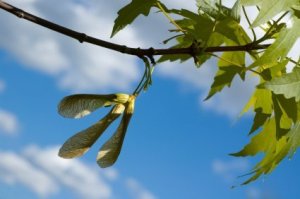 Raising native tree species from seeds is a fun and rewarding process. It's also a fairly simple one. Although it is less expensive to grow trees from seed than it is to plant nursery-grown trees, what you save in money you'll probably make up for in time. Depending on the species of tree you plant, the process can be painfully slow. So if you're looking to grow native trees for the sake of their flowers, you're going to need to exercise some patience to see them reach their flowering size.
Raising native tree species from seeds is a fun and rewarding process. It's also a fairly simple one. Although it is less expensive to grow trees from seed than it is to plant nursery-grown trees, what you save in money you'll probably make up for in time. Depending on the species of tree you plant, the process can be painfully slow. So if you're looking to grow native trees for the sake of their flowers, you're going to need to exercise some patience to see them reach their flowering size.
Extracting seeds: Many seeds are surrounded by a protective coating that needs to be removed before planting. The coating on winged seed (maples, birches, ashes, and elms) can be removed by gently rubbing it between your finger and thumb. Seeds with a harder coating, like walnuts, may have to be removed with a knife. Pine and spruce cones can be placed in a paper bag and stored in a warm, dry place until the scales pop open and release the seeds into the bag. Cedar cones will need to be soaked in very warm water to open the scales. To extract seeds from trees with large fruits like crab apples (Malus), simply cut the fruits open to access the seeds. Smaller fruits, like those from mountain ash (Sorbus), can be soaked in a jar of warm water for a few days until the viable seeds sink to the bottom. Then simply discard the pulp and soak the seeds again until any remaining flesh is soft enough to be picked off.
Seed storage: Once the seeds have been extracted, dry them at room temperature and place them in a sealed plastic bag. (Don't forget to label them!) If you plan to store the seeds for an extended period of time, keep lilac, pear, and Caragana at room temperature. Most seeds need cold, dry conditions and store well in the refrigerator if kept in sealed plastic containers. Buckeye, walnut, maple, and oak prefer damp, cold conditions (33 F to 50 F).
Scarification (nicking the seed coat): Large seeds with very hard coverings like oaks (Quercus), may need to be nicked with a sharp knife or filed with coarse sand paper or an emery board to let in moisture. Smaller seeds that are not easily nicked by hand can be shaken in a jar lined with coarse sandpaper or partly filled with grit. Seeds from legumes like black locust (Robinia) or acacia should be left to soak in a container of hot water for approximately 24 hours in a ratio of 3 parts hot water to 1 part seed.
Stratification (cold treatment): Seeds of trees from temperate climates commonly need a period of cold treatment (stratification) to overcome dormancy. The seeds may be either sown outside so that they are chilled naturally over winter or stratified artificially in the refrigerator.If refrigerating your seed, mix it with moistened vermiculite, or peat and sand. Place it in a clear plastic bag, then seal the bag and put it in a refrigerator. Check the seed regularly through the unopened bag-it should be sown as soon as there are signs of germination.
The Montana State University Extension Service has put out this great resource guide listing what types of treatments are needed to break dormancy according each tree species.http://csfs.colostate.edu/pdfs/growseed.pdf
After sowing, thoroughly water all seeds from above with a hand-held mister. Temperate species can be kept in a cooler location (54-59 F) and warm-temperate and tropical species in a warmer location (70 F) until they germinate. Once the seeds have successfully germinated, move them into bright, indirect light and keep the growing medium consistently damp, but not wet.